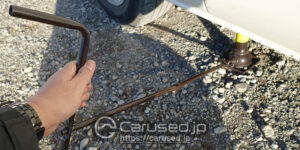Whether you’re looking for brand-new or used Toyota HiAce vans for sale, you’d always want to ensure that the air conditioning system is working properly. It can be inconvenient for the driver and the passengers to have a malfunctioning AC amidst the scorching heat. Whether you’re using your HiAce as a cargo or commuter vehicle, you would want to have optimum comfort inside the van.
If there is no cool air coming out of your vehicle’s air conditioning system, there might be some sort of motor damage. However, it is possible that you have a leaking refrigerant. Of course, you can always bring your van to a professional mechanic. However, it still pays to know how to inspect your vehicle’s AC for leaks. This skill will come in handy when you decide to shop for used Toyota HiAce vans for sale.
First Step: Check if the Refrigerant is Leaking
One of the best tools for determining any refrigerant leak in air conditioning and cooling systems is the TIF 5000 halogen automatic leak detector. This nifty device has an automatic ambient control. What the feature does is adjust and control the atmospheric ambient refrigerant.
Second Step: Switch TIF 5000 On
Make sure you read the instructions on the label of TIF 5000 before you proceed. Once you switch on the device, you will see a red LED light illuminating. If you do not see this, then there must be something wrong with the battery. You can use the gadget immediately without warming it up. If you notice the LED lighting up but there’s no tone coming from the device, you need to replace the sensing tip.
Third Step: Locating Leaks
You will be able to determine where the leaks are because the gadget will beep, indicating the presence of refrigerant or halogen gas. On the other hand, if the area is heavily contaminated with refrigerant, try turning off the gadget. Turn in back on to resume inspecting for leaks. If the machine emits a fast, high-pitched tone, it means there’s a high contamination in the area.
Fourth Step: Check the Condenser Coils and Look for Leaks
Take the device for detecting leaks, then trace the coils of an exposed condenser. Doing so will help you determine if there is any damage to it. What you need to do is point the gadget near the refrigerant cooling and piping coils. Inspect the piping for stains which indicate that the area had been affected by leaking refrigerant.
Keep in mind that if the coils start to corrode, they can get damaged easily. So, if you do not repair them immediately, there will be leaks in this area. Once you’ve determined where the leaks are coming from, use a sealant to stop them. To do this, you need to follow the steps below:
- Start the engine.
- Switch the AC and fan on to their maximum level.
- Get the sealant and attach a hose to it.
- Take the low-pressure port and connect the hose coupler to it.
- Once you’ve transferred the liquid, refill the system with refrigerant.
- Run the air conditioning system for about 15 minutes. Doing this will allow the sealant to spread across the system.
On the other hand, use your best judgement to know whether the problem is beyond repairs. In this case, it will be advisable to replace the coils or the condenser unit with a new one. Again, when it comes to air conditioning or car radiator system maintenance, your best bet is to bring your HiAce van to a professional mechanic.




Hello
Hello sir, how may we help you today?